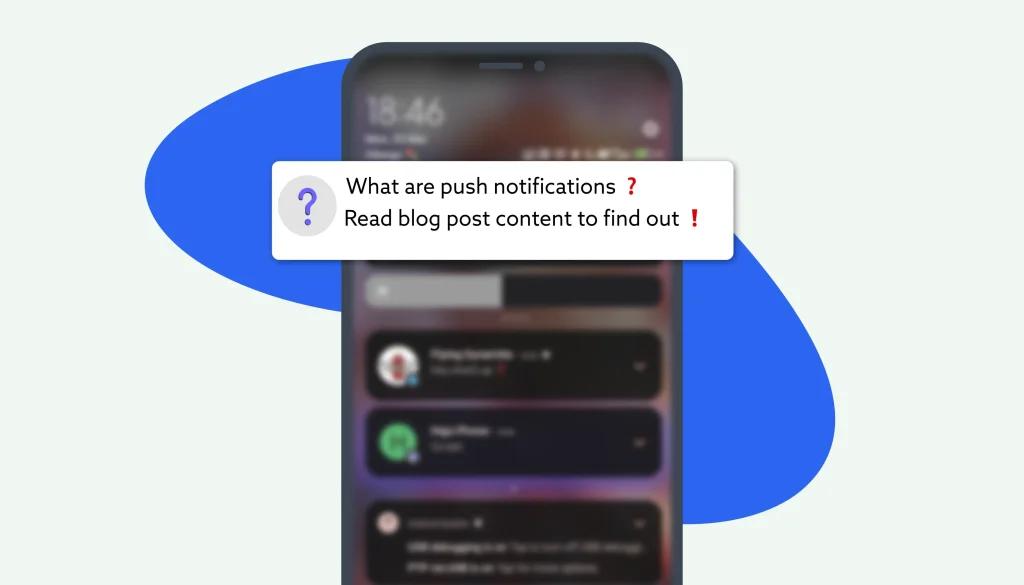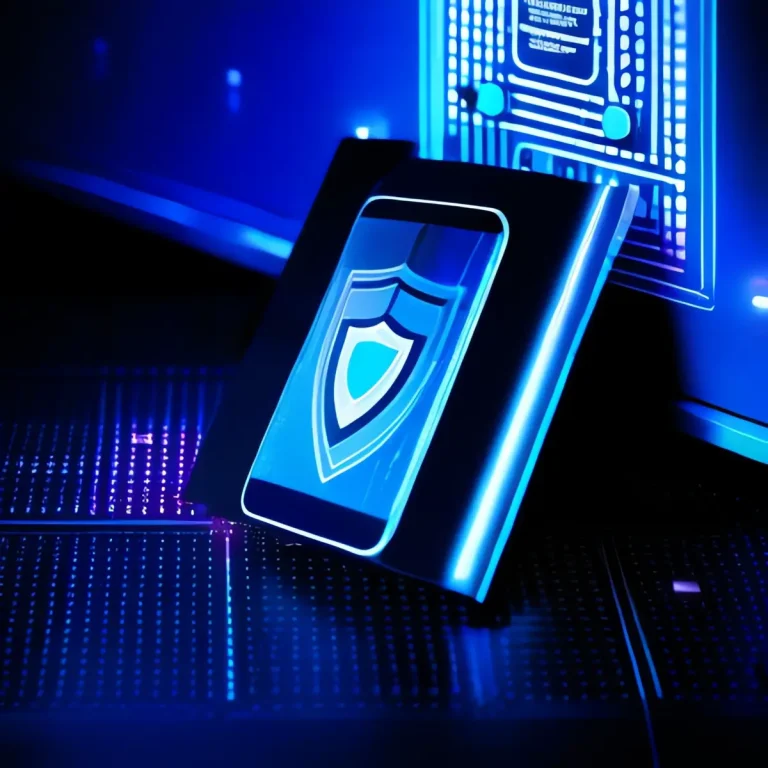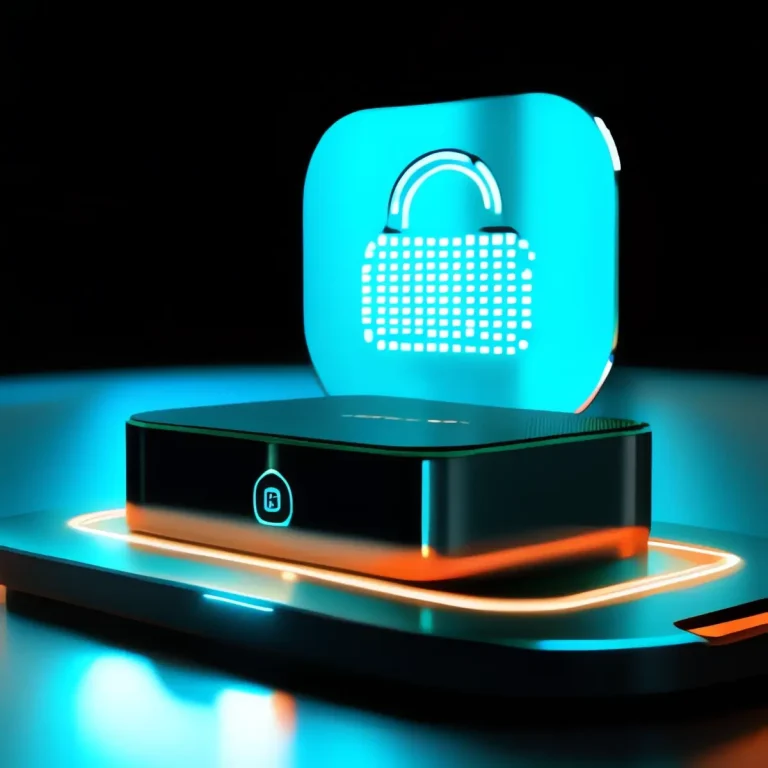What are push notifications

In a world where mobile apps compete fiercely for user attention, retaining users and keeping them actively engaged has never been more challenging—or more critical. One of the most effective tools for achieving this is the mobile push notification.
Whether you’re running an e-commerce app, a social platform, a news outlet, or a weather service, push notifications give you a direct line to your users. Used correctly, they can significantly increase engagement, improve user retention, and ultimately boost revenue.
But what exactly are push notifications, and how can they be leveraged to drive real value?
The definition of push notification
A push notification is a popup message that appears on a user’s device—whether it’s a smartphone, tablet, or desktop browser—typically at the top of the screen or in a system-designated notification area. These messages can include text, images, icons, and interactive buttons, allowing for quick actions such as “Reply,” “Buy now,” or “Open App” without requiring the user to open the application.
Unlike emails or SMS, push notifications are instant, non-intrusive, and don’t require any user input to arrive. They are delivered via a cloud-based service and can be sent even when the application is closed or running in the background. This makes them a powerful real-time communication tool between apps and users.
Push notifications serve as micro-interactions that remind, inform, or engage the user—turning passive app users into active participants.
How push notifications are used
Push notifications are incredibly versatile and can be used across a variety of industries and use cases. Although often associated with marketing, their role spans far beyond that, providing utility in communication, security, automation, and service continuity.
- Marketing
In marketing, push notifications are one of the most cost-effective and ROI-positive channels available. When used strategically, they can significantly increase:
– Customer retention by reminding users about your app or offering timely incentives.
– Click-through rates (CTR) with targeted promotions or personalized product suggestions.
– Reactivation by nudging inactive users or recovering abandoned carts.
– Sales performance by creating a sense of urgency or highlighting time-sensitive offers.
– Marketing insights via analytics such as open rates, click behavior, or user segments.
A well-timed marketing notification—like “Flash sale ends in 2 hours!”—can create a sense of urgency that drives immediate action. - Messaging Communication
Push notifications are also used as a real-time messaging channel—often with the highest engagement rates of any notification type. This category includes:
– Emergency alerts (e.g. outages, road closures, severe weather).
– Internal app messaging (e.g. friend requests, chat replies, delivery updates).
– Public safety and transportation messages.
Because of their immediacy, push messages in this category often provide life-critical or time-sensitive information. - Security Authentication
In the context of cybersecurity and identity verification, push notifications are frequently used for:
– Two-Factor Authentication (2FA): Instead of entering a code manually, the user simply taps a push notification to confirm their identity.
– Banking access control: Users are notified of login attempts and can approve or deny access in real time.
– Login anomaly detection: Unusual login locations or device attempts trigger alerts.
This adds an extra layer of security and reduces friction for legitimate users. - Service Messages
Sometimes, push notifications don’t display anything to the user. These are called silent push notifications, and they’re particularly useful for mobile applications. Their main roles include:
– Triggering background app updates.
– Syncing new data with the server.
– Executing remote commands, such as logging the user out or refreshing content.
These notifications are invisible to the user but crucial to maintaining app performance, reliability, and synchronization.
Types of mobile push notification services:
Each mobile platform uses its own native push notification service:
- Firebase Cloud Messaging (FCM) – the most common solution for Android applications, developed by Google. Supports custom payloads, images, and analytics.
- Apple Push Notification Service (APNS) – used for iOS and iPadOS devices. Known for high delivery accuracy and integration with Apple’s notification center.
- Huawei Push Kit – Huawei’s custom notification system, especially relevant for users in regions where Google services are not available.
If your mobile app is available on multiple platforms (e.g., Android, iOS, Huawei), you’ll typically need to implement and maintain separate services for each platform. This increases development and maintenance costs and complicates message consistency across devices.
That’s why tools like Push0 exist—offering developers an all-in-one solution that simplifies push infrastructure, reduces development costs, and ensures consistent delivery and tracking across all major platforms.
Why are push notifications important?
Push notifications are one of the most effective communication channels available to mobile apps and web platforms. They enable direct, real-time access to users without the need for them to open an app or check an inbox.
Why does this matter?
Because timing and relevance are everything in user engagement. A well-crafted push notification can bring a user back into the app at exactly the right moment—boosting conversions, reinforcing brand presence, and reducing churn.
Moreover, users returning after a long period of inactivity often exhibit higher conversion rates than brand-new users. Push notifications are a perfect tool to re-engage such users by reminding them what they’re missing.
For example:
• A news app might send breaking news alerts even when the app is closed.
• A weather app may warn about upcoming storms in your region.
• A fitness app can send morning workout reminders to keep users on track.
Ultimately, push notifications help bridge the gap between passive and active users.
Benefits of using push notifications
- Increased engagement and user loyalty – Push notifications keep users actively involved with your app, leading to longer session durations and better app stickiness.
- Audience segmentation enhanced customer care – Send relevant messages to specific user groups based on behavior, preferences, or location.
- Higher customer retention – Reduce churn by reactivating dormant users and reminding them of your app’s value.
- Higher conversion rates – Nudging users at the right moment can boost sales, sign-ups, or any key performance metric.
- Connected User Experience (UX) – Push messages act as part of the user journey, helping users navigate, complete tasks, or discover new features.
When used strategically and respectfully, push notifications can feel like a helpful assistant, rather than an annoying popup.
Conclusion
Push notifications have evolved from simple popups into sophisticated communication tools that are integral to the mobile user experience. Whether you’re aiming to drive more sales, retain your audience, improve app engagement, or secure your platform—push notifications offer the reach, immediacy, and flexibility needed to make it happen.
However, the true power of push notifications lies in their relevance. When they are personalized, well-timed, and add genuine value, they become more than just messages—they become a reason for users to return, interact, and convert.
So whether you’re launching a new app or looking to optimize an existing one, don’t underestimate the impact of a well-designed push notification strategy. It might just be the push your users—and your business—need.
Like what you’re reading?
Push0 is a privacy-first push notification service built for devs and marketers who care.
Try it free for 14 days — no credit card, no fluff.



